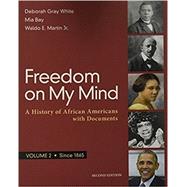Gain insight into African American history from early slave trading in Africa through present day as Freedom on My Mind, Volume 2 combimes historical narrative and primary resources together, putting the African American story into the larger context of US history.








